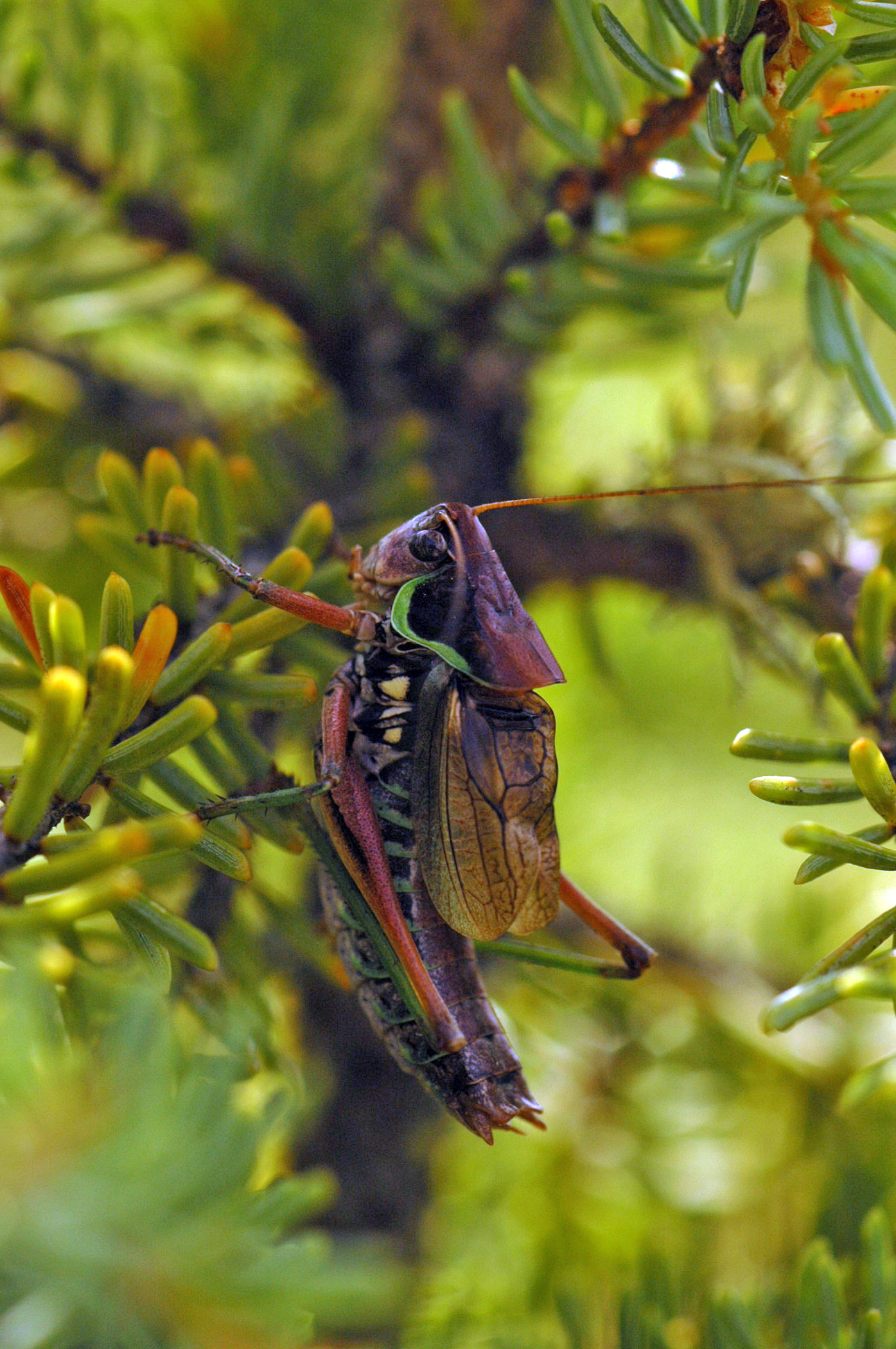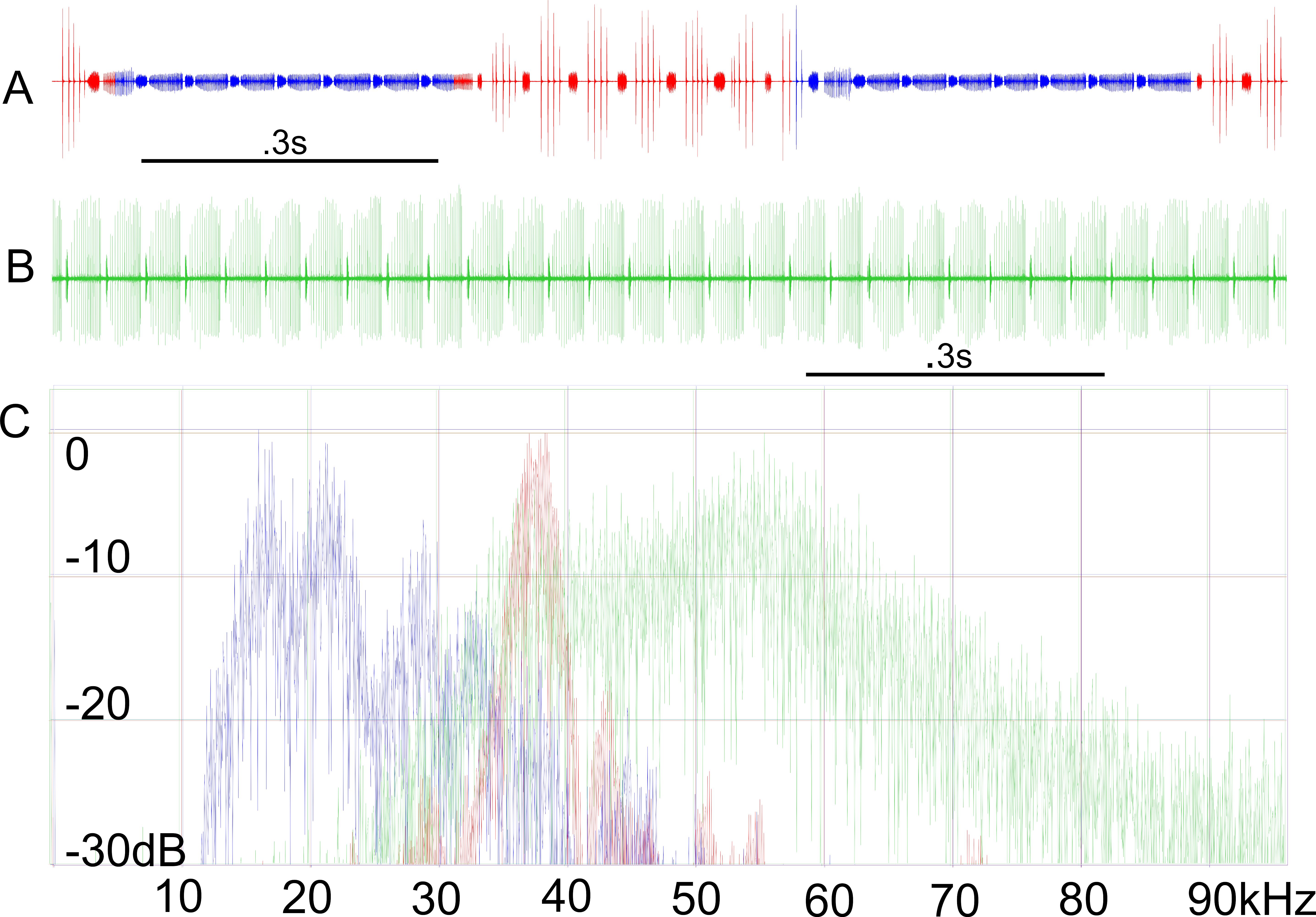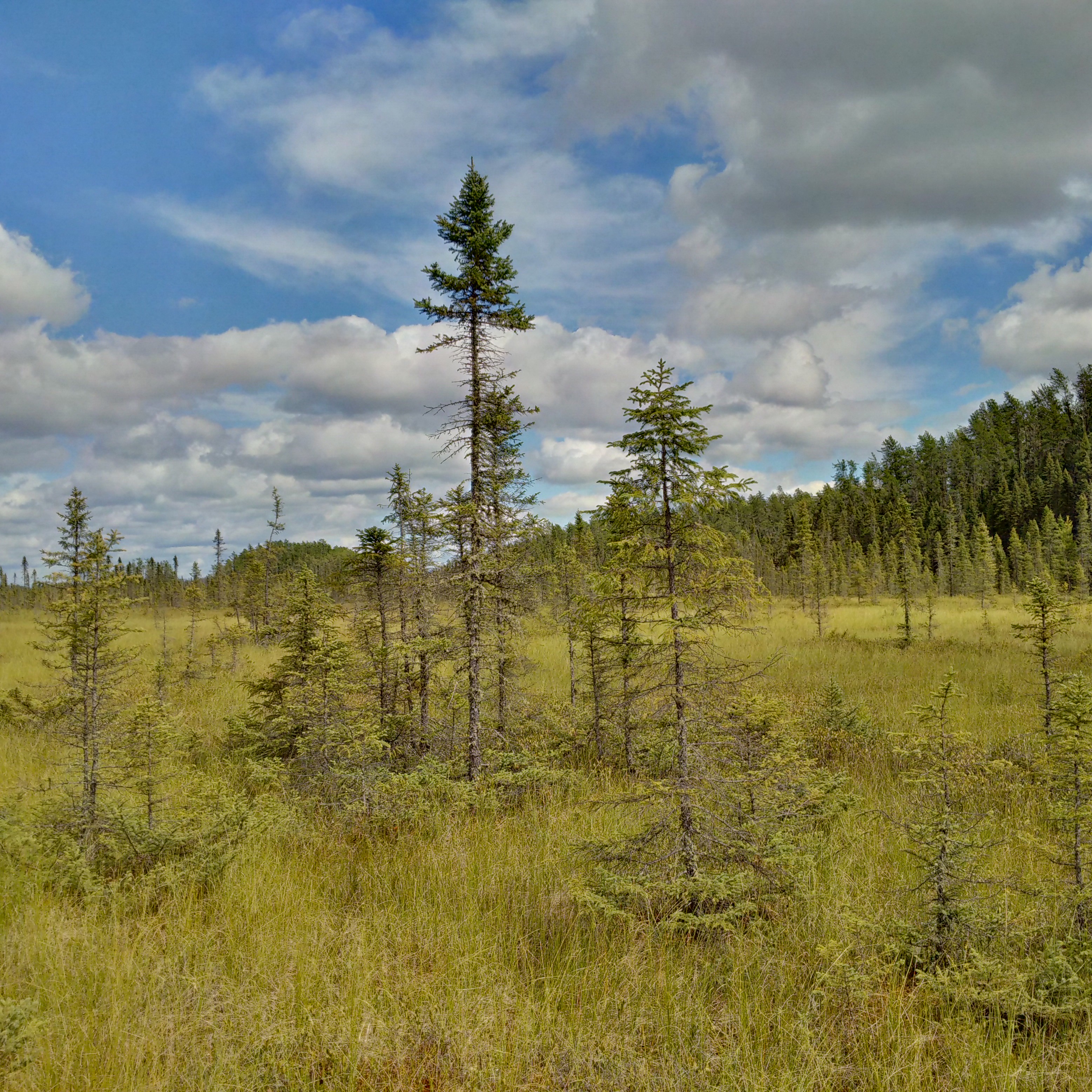 There is a great diversity of tropical katydid species; several thousand are described; but the family Tettigoniidae dwindles at higher latitudes and so Canada has but one endemic species: Sphagniana sphagnorum F. Walker -- the bog katydid. The species' type locality, Marten Falls, is on the Albany River. There must be something special about this northerly situated acoustic insect.
There is a great diversity of tropical katydid species; several thousand are described; but the family Tettigoniidae dwindles at higher latitudes and so Canada has but one endemic species: Sphagniana sphagnorum F. Walker -- the bog katydid. The species' type locality, Marten Falls, is on the Albany River. There must be something special about this northerly situated acoustic insect.
Male katydids stridulate with their forewings (tegmina), signalling to attract potential mates and to warn off rivals. The adult male (left) is perched in a black spruce tree a metre or so above the bog surface, his colours enhanced by the low evening sun.
The saddle-shaped tergite just behind the head is the pronotum. Green edging here and on his abdomen help him hide in spruce needles. Photo: J. E. (Dita) Klimas
A little west of Lake Superior in northwestern Ontario a sphagnum bog of stunted black spruce and tamarack (right) gives ideal habitat for this insect. Bog rosemary, blueberry, cranberry, cotton grass, insectivorous pitcher plants and sun dews grow among hummocks of sphagnum moss between the trees. lt is a surface that absorbs sound with little reflection.
The video below shows a stridulating male of S. sphagnorum. You can see his abdomen pumping as he breathes with the effort of singing; his specular sound radiators are backlit as part of the vibrating tegmina. Katydid to and fro scraper-on-file cycles are mostly too fast for the human eye to follow, as is the case here, but in this species one can see a regular shifting of the forewings as every quarter second the singer changes the file regions in use, from more distad to more proximad and back again.
Slowed the two song parts show distinctive patterns in the time domain.
The song of the bog katydid is remarkable for having these two file-basal and file-distal alternating parts, one broadband, mostly audio in the high audio frequency range, the other an ultrasonic signal with a dominant peak near 35 kHz. Song parts are distinguished below in a time-domain trace (A), one part in red, the other in blue. For each part a small return stroke of the scraper on the file alternates with a train of pulses. After 6 or 7 such 'phonatomes' (blue) of the audio stridulation mode, the singer switches to several phonatomes (red) in the ultrasonic mode then back to audio again. The spectra of the two modes are very different (C), high broadband audio alternating with a ultrasonic peak near 35 kHz. The green-coded song (B) is that of another katydid species sharing the habitat (Conocephalus fasciatus). C. fasciatus' sustained buzz masks S. sphagnorum's ultrasonic mode.


